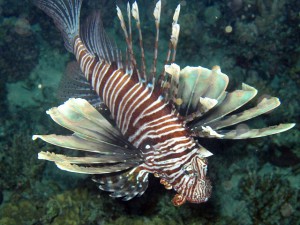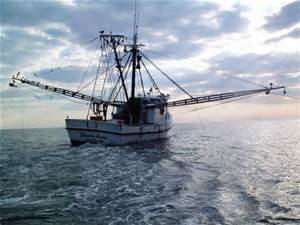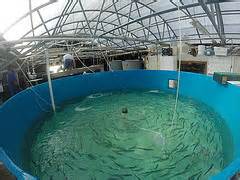So what now?
What lies ahead for the seafood industry in the Florida Panhandle?
Well I will start by saying I do not have a crystal ball… so I truly do not know, but most people plan for the future and many have looked at what COULD happen for Florida seafood.
Will the demand for seafood still be there in the future?
In short… yes
Recent reports indicate that Americans are not consuming the recommended 3-6 ounces of seafood a week. Though many Floridians are not consuming this amount either they are consuming above the national average of 3.5 ounces. Seafood is still important to us. Community fish fries are a part of our culture and will be around. The popularity of sushi and other methods of preparing seafood has increased in recent years. There will be a demand for some seafood products. In the Pensacola area there has been recent interest in buying local seafood. Whether they are willing to pay higher prices than the foreign imports is to be seen but there is still a market for seafood products.
Can the seafood industry meet this demand?
That depends…
Several commercially valuable species have been deemed “overfished”. If the demand for these products increases there could be a problem meeting due to either regulations forbidding the industry to do so, or the numbers of fish available may make it prohibitive. For some species they may become part of a smaller higher paying market. There may be new species introduced that could be marketed and meet the demand, lionfish for example. The demand for this fish is growing but the availability is still low due to method of capture. At the moment the most effective method of harvesting lionfish is by spearing. We do not have enough divers to meet the 500 lbs. of fish / week/ restaurant currently requested. But there is another option to consider… aquaculture.

Humans have been growing our food for centuries (agriculture). There are few societies on our planet today they acquire their meat and vegetables solely by hunting and gathering. Aquaculture has also been around for centuries as well, just not in the United States. With the increasing world population, and the need for food along with it, scientists have been working on more efficient ways to produce food for over 100 years. The “green revolution” appeared in the mid 20th century and the impact was huge. The American food machine was churning out products like never before. It did come with a price for the environment around the farms, and there is concern now about the problems with high densities in some livestock operations, but the food is there. Many scientists believe aquaculture will be the method to meet the future seafood demand. Many are not surprised to learn that farm raised fish is common in most supermarkets, but they may be surprised to learn that 80-90% of it is imported from overseas. When we hear “farm raised” we immediately think of Mississippi catfish… which is local right? But in fact much of it is from Asia and Central America.
Will aquaculture increase in the Florida panhandle and will the public be okay with it?
I do not know.
Many Florida Panhandlers catch their own seafood, and there have been issues between the recreational and commercial fishermen for a few years now. Either way many Panhandlers will seek out fresh local seafood and provide it for their families. Whether they will embrace aquaculture is to be seen.
Either way seafood should be a part of our weekly diet. For many, the post oil spill fear of safety is no longer a concern. There is science that indicates our seafood is safe to eat. The concerns about mercury are real but low consumption of mercury target species (no more than one serving a week) has been deemed safe. For pregnant women (or women trying to become pregnant) this fear has kept them away from all seafood during their pregnancy. A recent study showed that there are important nutrients and vitamins provided in seafood products that are much needed during development and some women are not getting these. The recommendation here is to eat seafood but consume products not high in mercury. There are several agencies who post which species are high in mercury and which are low.
The seafood industry is an important part of panhandle history and culture. Though the industry has fallen on tough times I feel some form of commercial fishing will be around for a few years. We hope you learned something from this series during National Seafood Month and encourage you to ENJOY GULF SEAFOOD!
Additional resources:
Pregnancy
http://americanpregnancy.org/pregnancy-health/mercury-levels-in-fish/
mercury list
http://www.fda.gov/Food/FoodborneIllnessContaminants/Metals/ucm115644.htm
Florida Department of Health – seafood safety
FWC – mercury
http://myfwc.com/research/saltwater/health/mercury/human-health-advisories/
Florida Sea Grant
http://www.flseagrant.org/seafood/
NOAA-NMFS seafood recommendations
http://www.nmfs.noaa.gov/aquaculture/faqs/faq_seafood_health.html#5how
- Our Environment: Part 11 – We Need Water - July 7, 2025
- Our Environment: Part 10 – Improving Agriculture - June 20, 2025
- Marine Creatures of the Northern Gulf – Snails and Slugs - June 20, 2025


